Among vs. Amongst 4 Key Differences, Pros & Cons, Similarities Difference 101
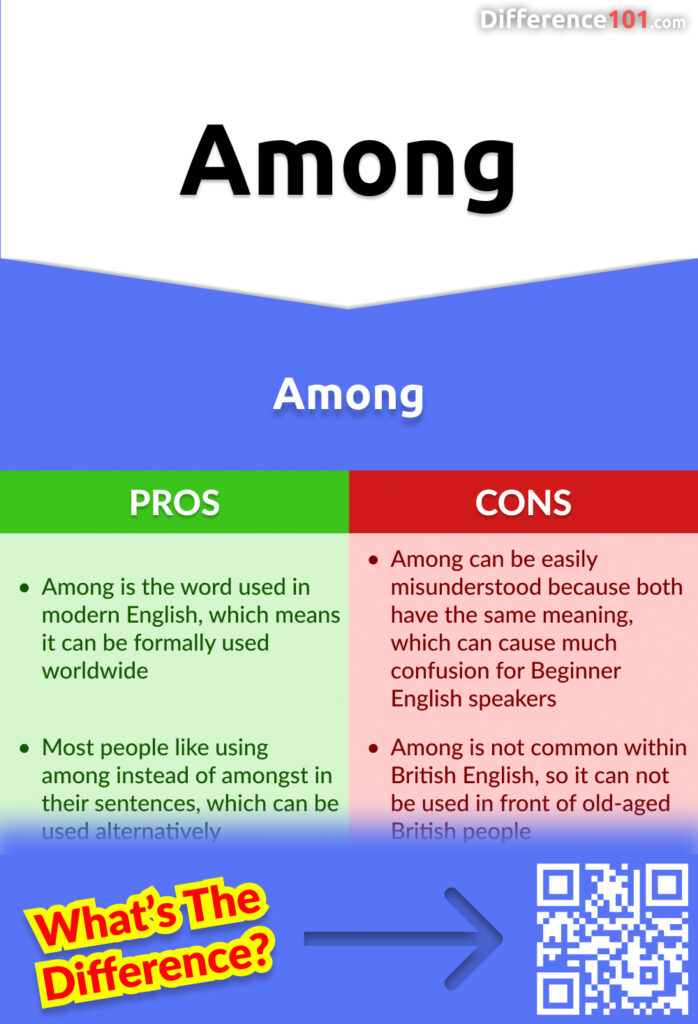
Among vs. Amongst 4 Key Differences, Pros & Cons, Similarities Difference 101
The Quick Answer "Among" and "amongst" are used interchangeably in the UK but not in the US. For example: Man is an animal which, alone among the animals, refuses to be satisfied by the fulfilment of animal desires. (British inventor Alexander Graham Bell) Truth springs from argument amongst friends. (British philosopher David Hume)
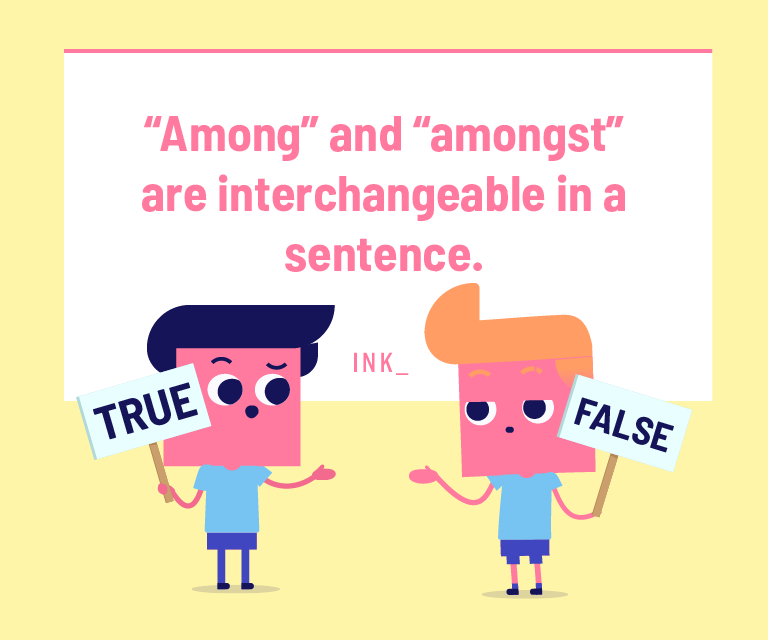
Among vs. Amongst The Easiest way to Tell the Difference INK Blog
Among is more common in modern writing. Americans tend to always use among, while in the UK both among and amongst are used. Although we've covered the difference between Among/Amongst in another post on Daily Writing Tips (spoiler alert: there isn't one), you might still be wondering which word would work best in a particular context.

Confused Word Between vs Among in English English Study Online English vocabulary words
ə-ˈməŋ variants or less commonly amongst ə-ˈməŋ (k)st Synonyms of among 1 : in or through the midst of : surrounded by hidden among the trees 2 : in company or association with living among artists 3 : by or through the aggregate of discontent among the poor 4 : in the number or class of wittiest among poets
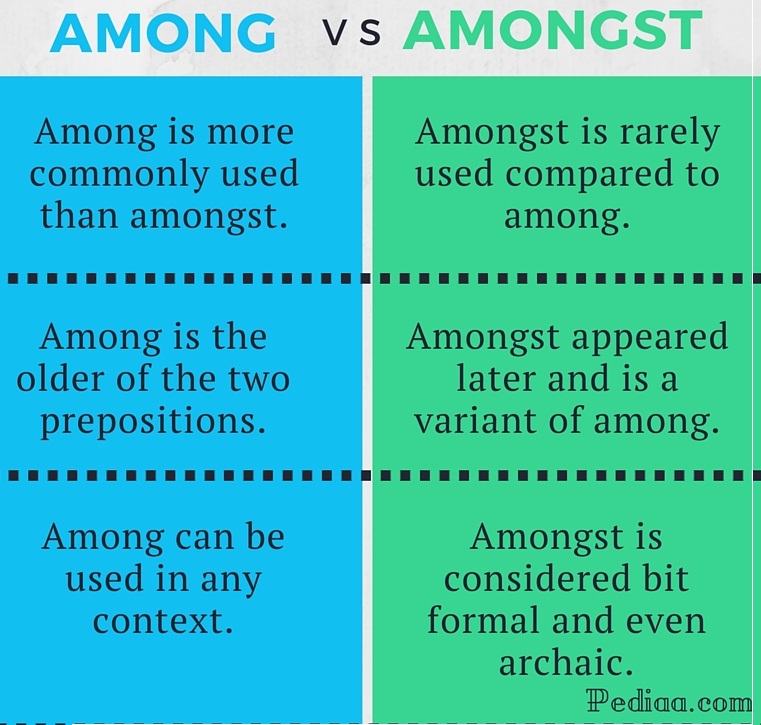
Difference Between Among and Amongst
Use 'Among' to Describe Being in a Group Although both among and amongst are acceptable prepositions in modern English that mean "in the middle of" or "in a group," among is the preferable word choice. It first appeared in Old English in the 12th century as onmang (meaning "in"). Today, among is much more popular than its sound-alike amongst.

Among vs. Amongst—Explanation and Examples
The short answer is that among and amongst are two variations of the same word. They have the same meaning in modern English, but among is used much more frequently. Among dates back to Old English, circa 1000 AD. Amongst was first used in Middle English, circa 1200 AD, when many words gained extra sounds they didn't have before.
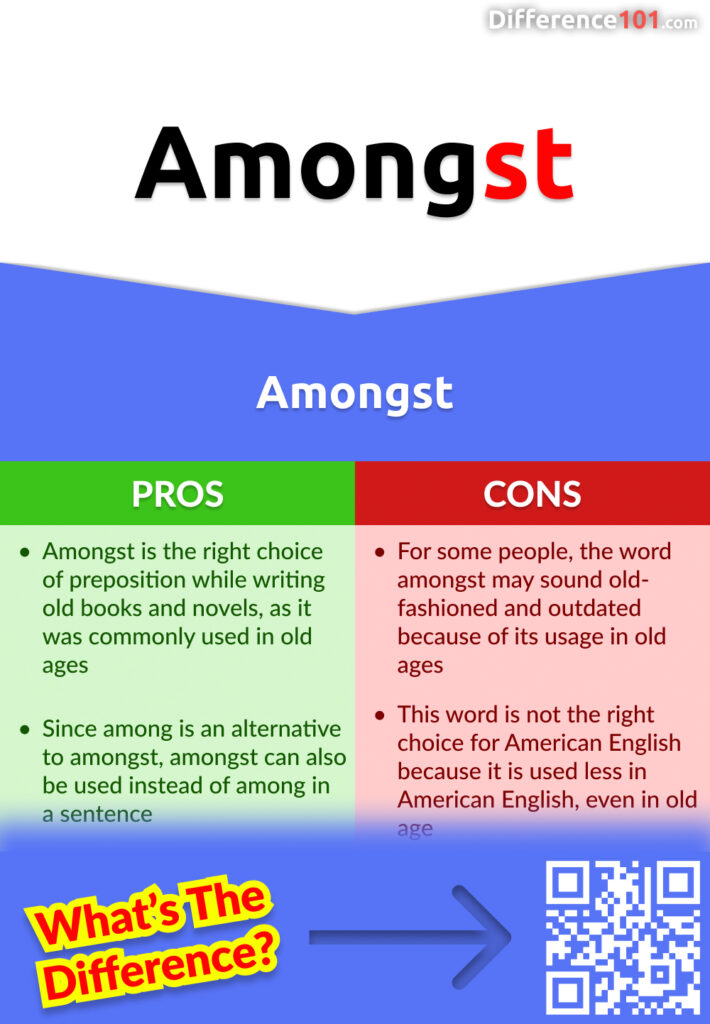
Among vs. Amongst 4 Key Differences, Pros & Cons, Similarities Difference 101
Among and amongst can be defined as follows: 1. "Surrounded by" or "in the middle of somebody/something". I found the kitten among the bushes. I found the kitten amongst the bushes. 2. "In company or association with". We were included among the best chefs in the state. We were included amongst the best chefs in the state.

Among vs. Amongst YouTube
What is Correct: Among or Amongst? Technically, both among and amongst are correct. Open almost any dictionary, and you'll find that these words share more than just a similar appearance. They both came from the Old English phrase on gemonge, which means in a crowd.Among and amongst mean surrounded by, in company with, or in the midst of.
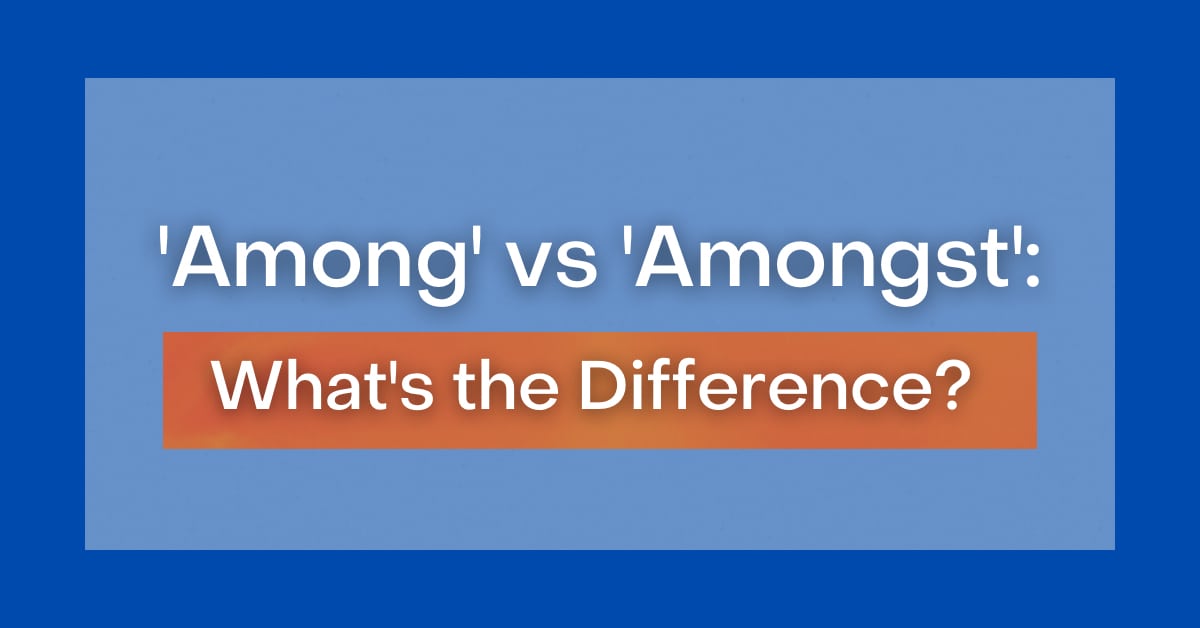
‘Among' vs 'Amongst' What's the Difference?
The definition of among and amongst is to be surrounded by something, in the company of others, or part of a number or group of people. Among is also used to describe an occurrence or experience shared by the same group or community, or a differentiation between three or more people.
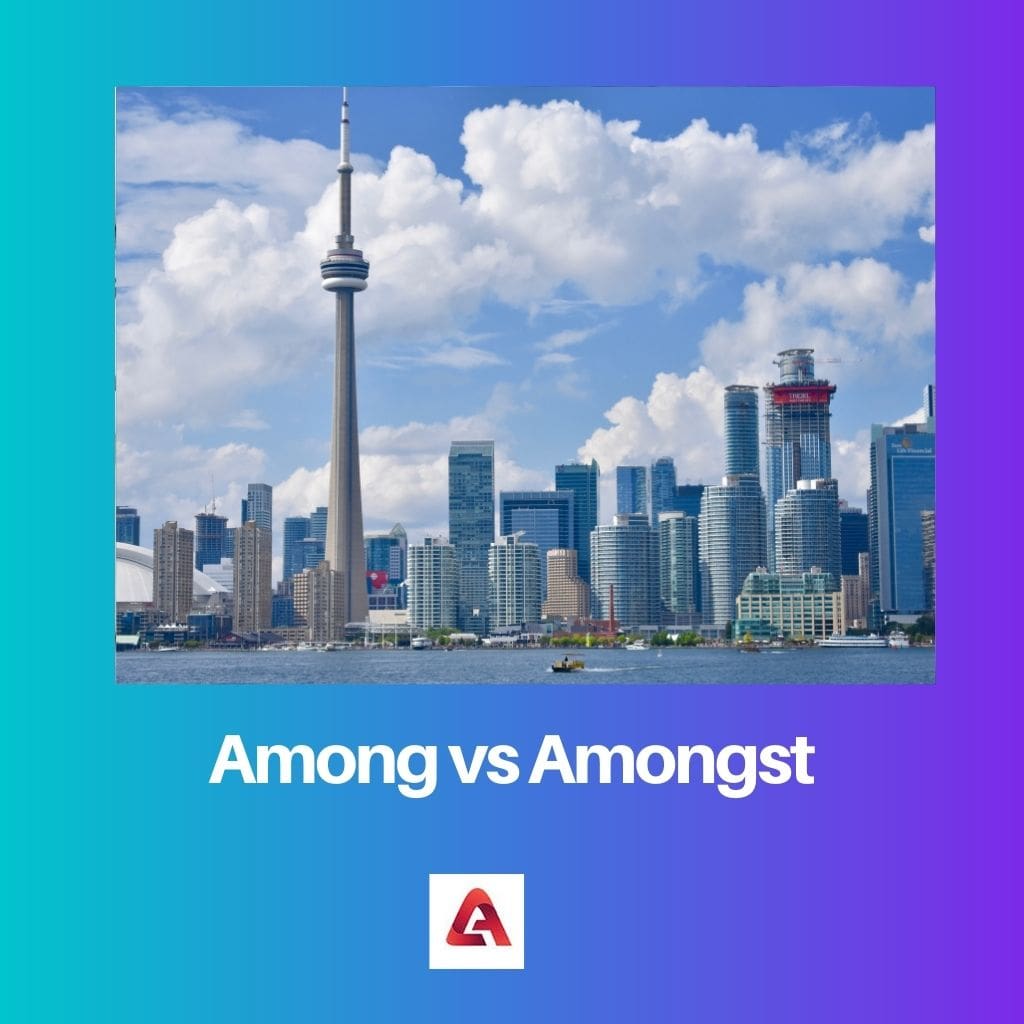
Among vs Amongst Difference and Comparison
from English Grammar Today Among and amongst are prepositions. Among means 'in the middle or included in a larger group of people or things'. Among is commonly followed by a plural noun phrase: I'm not worried about her. She's living among friends. I think I've got that album among my boxes of CDs upstairs.
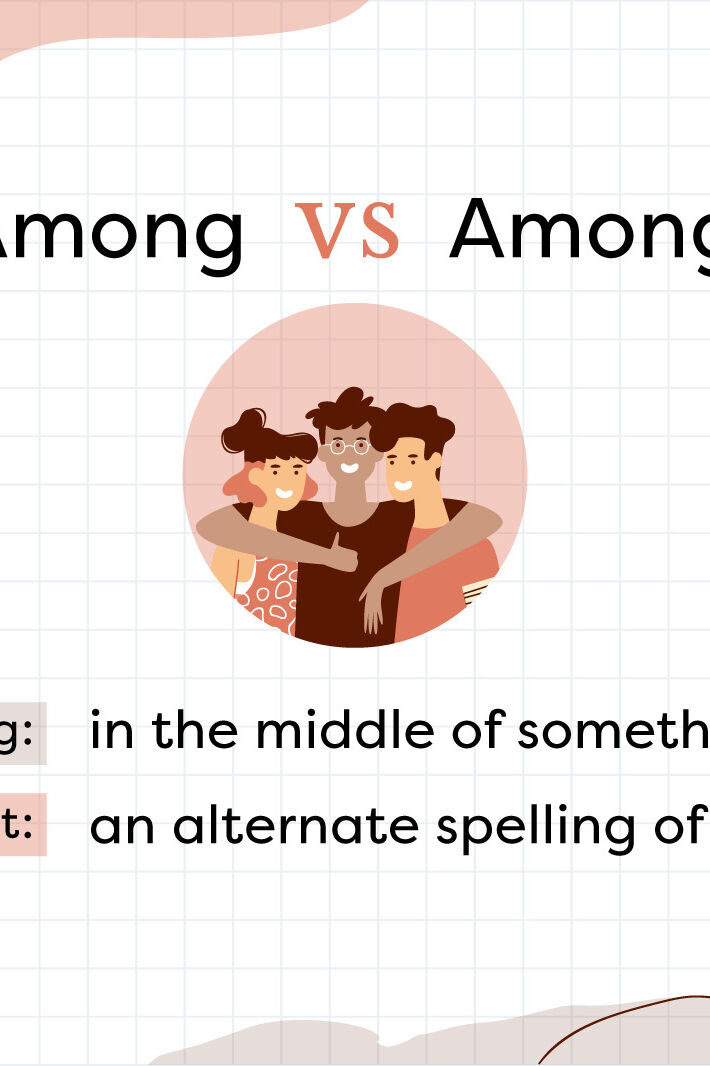
Among vs. Amongst Which Should You Use? YourDictionary
'Amongst' Usage This sort of overcorrection is common when a writer wants to sound fancy or educated, but there is another overcorrection that gets grief from usage commentators: the substitution of the variant amongst for among or between.
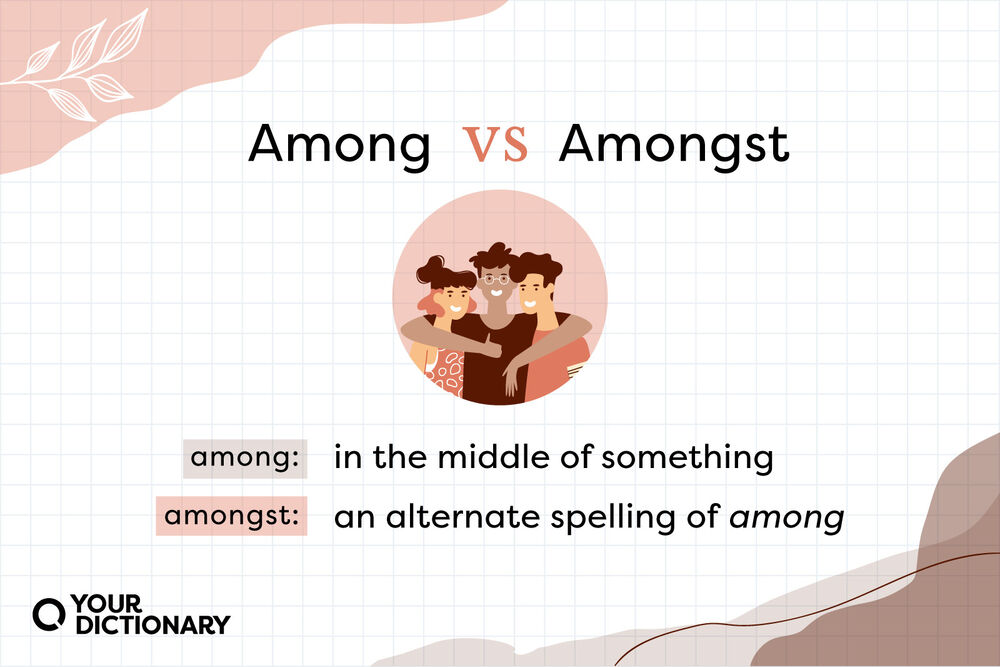
Among vs. Amongst Which Should You Use? YourDictionary
Product Company Among vs. Amongst: What's the Difference? Shundalyn Allen Updated on September 30, 2022 Grammar Amongst and among mean the same thing, but among is more common, particularly in American English. Among and amongst definition

Among vs. Amongst How to Use Amongst vs. Among Correctly • 7ESL
Among and amongst are both prepositions, meaning in the midst of, surrounded by, in the company of, or in association with. For example, A Northeasterner amongst Southerners. I found myself among the wealthy. There was a group of tourists amongst my group in the museum. Don't worry; you're among friends! They are always fighting amongst themselves.

Between vs Among Everything You Wanted to Know + 15 Examples
Among means in the middle of or surrounded by. There are places in Costa Rica where you can swim among a pod of dolphins. Amongst has the same meaning but is less common. As the ballerina rested amongst the poppies, visions of grandeur danced in her head. Now, let's go over a few ways to use these words in English. Using Among in a Sentence

Among Or Amongst What Is The Difference? Info Dispatcher
Usage Overall, among is more commonly used in both American and British English. In British English, while amongst is acceptable in most uses, among is generally preferred. Some British publications, including major newspapers, issue style guides that insist on using among.

AMONG Vs AMONGST How To Use Amongst Vs Among Correctly 7 E S L
Definition of Amongst. "Amongst" is an alternative to "among" and carries the same meaning. It was historically formed by adding the suffix -st to "among," a practice in older versions of English. Both "among" and "amongst" can be used interchangeably; however, "amongst" is generally considered more formal and less.
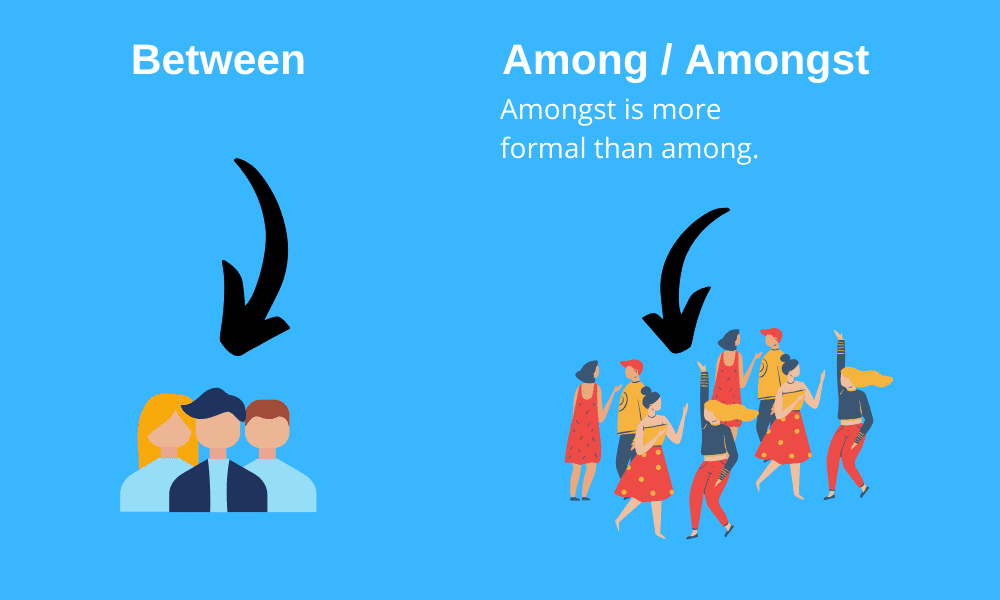
Among, Amongst et Between Explications Faciles et Exemples
Among is meant for "in the middle or included in a larger group of the people or things". Also, among is commonly followed by some plural noun form. Although both are having the same meaning, the frequency of its use is not the same. Among his much more popular compared to the "amongst".